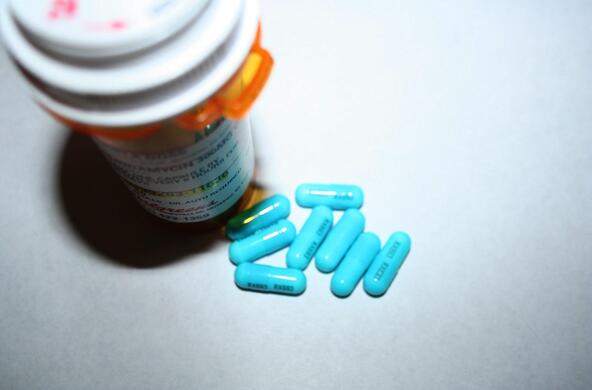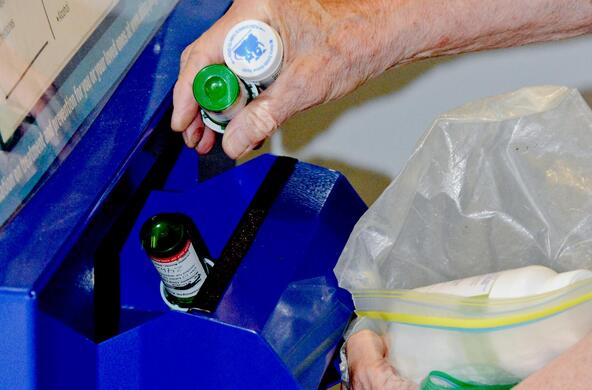New research has added to the growing body of evidence that the chemicals we put in our bodies often end up in our waterways — with noticeable consequences. A new study, published Thursday in the journal Environmental Science & Technology, explores what happens when amphetamine ends up in the ecosystems encompassing streams and it finds the drug can have a significant impact on the bacteria, algae and insects who call them home.
The fact that drugs are turning up in our waterways isn’t exactly news. Numerous studies over the years have revealed all kinds of substances in our water supplies, from caffeine to cocaine. The chemicals are most likely being transported via sewage systems after they’re excreted during urination or simply when people decide to flush their unwanted drugs away.
And scientists are starting to pay attention to the kinds of effects these chemicals can have when they turn up in streams and other aquatic ecosystems. Studies have suggested that birth control pills, for instance, can hurt the ability of fish to reproduce when the drugs make their way into waterways.
The effects of various drugs in the waterways is an area of special interest for Emma Rosi-Marshall, an aquatic ecologist at the Cary Institute of Ecosystem Studies and a co-author of the new amphetamine study. She’s been involved in research on the effects of everything from antihistamines to antidepressants on stream ecosystems.
Several recent studies on waterways around the world have detected the presence of amphetamine. Amphetamine is a potent stimulant that’s used in a variety of pharmaceutical compounds, most often to treat ADHD, as well as in a number of illicit drugs.
But according to Rosi-Marshall, “there had been very little research trying to understand the effects of these compounds on aquatic organisms.” So she and her team decided to investigate.
First, they tested six different stream sites around Baltimore, some of them urban sites, some of them more rural, to see what kinds of chemicals might show up. Sure enough, amphetamine was one of the substances present, along with caffeine, acetaminophen, at least one type of antihistamine and an agent for combating parasites. The amount of amphetamine in the water varied from one site to the next — the site with the lowest concentration contained just 0.003 micrograms per liter of water, while the site with the highest concentration contained 0.63 micrograms per liter.
Next, the researchers set up a series of eight artificial stream environments to investigate the effects of amphetamine on aquatic organisms. They added amphetamine to four of the environments — a concentration of 1 microgram per liter of water — and left the other four alone. The amount of amphetamine used in the experiments was higher than what the researchers observed in the Baltimore streams, but it’s a concentration that Rosi-Marshall said is considered “environmentally relevant,” meaning it could show up in real-life ecosystems.
“It’s also important to recognize that what we do in the artificial streams is just giving us an indication of whether there might be ecological consequences of those concentrations out in the wild,” she said. “The exact concentration out there in the environment is going to change from day to day.”
The researchers monitored the artificial streams for three weeks, conducting tests once or twice a week to investigate the amphetamine’s effects on various organisms, including bacteria, algae and insects. By the end of three weeks, they found some significant differences between the amphetamine-treated streams and the control streams.
For instance, microorganisms in the amphetamine-treated streams produced less chlorophyll — a chemical essential to photosynthesis — and they also seemed to produce and use less energy overall. Many tiny organisms in streams and other bodies of water, such as phytoplankton and algae, get their energy through photosynthesis. These little organisms are vital to the health of natural ecosystems, serving as primary food sources to larger animals (who are then eaten by even larger ones) and essentially making up the backbone of the food web.
Algae and bacteria communities in the amphetamine-treated streams also had some significant differences in the types or numbers of species present. And the researchers also observed that aquatic insects in the amphetamine-treated streams tended to emerge from the water more frequently, especially in the first and third weeks of the experiment.
The researchers did not continue to add amphetamine to the experimental streams after they initially put it in — and, in fact, they observed that the amount of amphetamine in the water declined over the course of the experiment. It’s unclear what exactly was happening to it during this time, but one theory is that it was being taken up or absorbed by the living organisms in the stream.
For now, it’s unclear how the differences between the treated and untreated streams might affect real ecosystems in the long term. The fact that there were differences in microbial communities or insect behavior does indicate that amphetamine has an effect — but whether that translates to overall negative consequences for the stream remains to be seen.
“It is very challenging to take the results and extrapolate them to what we would see in the environment,” Rosi-Marshall said. And she added that in real-life situations, it’s unlikely that amphetamine would be the only chemical in the water, anyway.
“We know, as humans, that if you take one drug and add another drug, these drugs can interact,” she said. “Out there in the environment, we don’t really understand how these drugs at low concentrations are interacting with one another to influence the ecology of fresh water.”
However, the study does clearly indicate that amphetamine, on its own, can have significant effects on a variety of aspects of stream life, even over a very short period of time. The study speaks to the importance of continued research on the long-term impact of medications and other drugs in the water supply, as well as the effects of their interactions with one another. In the meantime, Rosi-Marshall emphasized the importance of greater investment in the facilities that keep our water clean.
“We really need to invest in our sewage infrastructure and in our wastewater treatment plants so these treatment plants can do their job and remove as many compounds as they can,” she said. ‘We need to invest in new technologies to remove these compounds and invest in maintaining our underground infrastructure to keep these things from getting out into the environment.”






